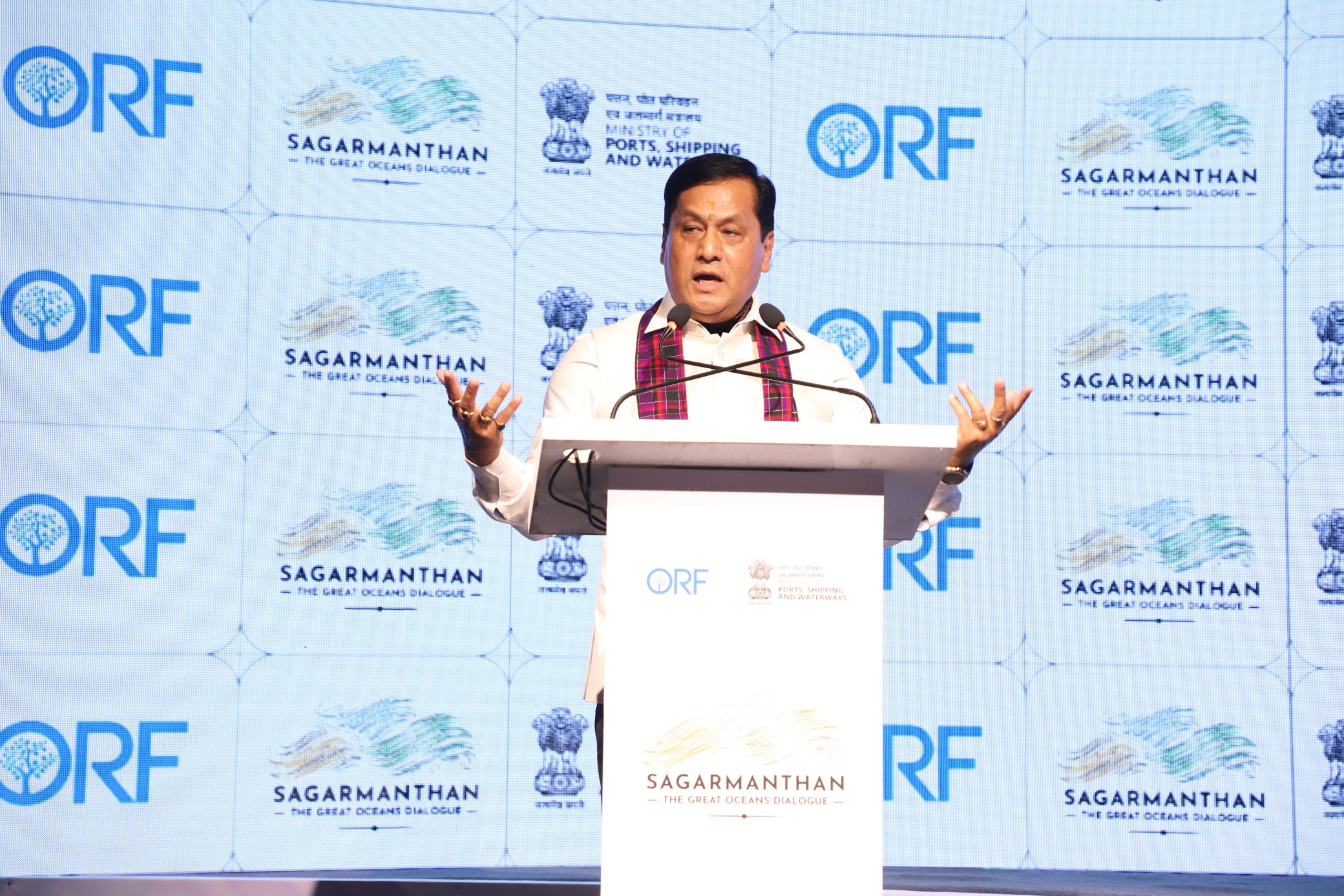
Chennai-Vladivostok Shipping Corridor will reshape regional and global trade networks : Sonowal
NEW DELHI : The Chennai-Vladivostok route is poised to be a cornerstone of this vision, reshaping not just regional but global trade dynamics. In a groundbreaking move poised to reshape trade networks, India has operationalized the Vladivostok-Chennai Maritime Corridor (VCMC), a strategic shipping route linking Chennai, India, with Vladivostok, Russia.
Union Minister of Ports, Shipping, and Waterways Shri Sarbananda Sonowal, speaking at the Sagarmanthan conference, announced plans to extend the route to include additional east coast ports Paradip and Visakhapatnam, signaling a significant leap in maritime connectivity.
The initiative, co-hosted by the Ministry of Ports, Shipping, and Waterways and the Observer Research Foundation (ORF), underscores India’s commitment to enhancing trade links with Russia and integrating itself deeper into global trade systems.
Strategic Importance of VCMC
The Chennai-Vladivostok Maritime Corridor spans 5,600 nautical miles and serves as a vital conduit between South Asia and the Russian Far East. Vladivostok, Russia’s largest Pacific port, lies merely 50 kilometers from the Russia-China border, making it a strategic trading hub with direct access to Northeast Asia.
The corridor’s geographical route traverses critical maritime regions, including the Sea of Japan, the South China Sea, the Strait of Malacca, the Bay of Bengal, and the Andaman and Nicobar archipelago. This positioning not only facilitates efficient trade flows but also enhances India’s influence in the Indo-Pacific, a region increasingly central to global geopolitics.
Current and Future Trade Dynamics
The VCMC is already facilitating two-way trade. India imports petroleum and liquefied natural gas (LNG) from Russia, while exporting textiles, engineering goods, and machine parts. With the addition of Paradip and Visakhapatnam ports, the route will cater to a broader spectrum of commodities, increasing the corridor’s economic viability and fostering regional trade integration.
“This maritime corridor has immense potential to redefine trade relations between India and Russia while simultaneously reducing dependency on traditional supply chains dominated by Western powers,” said Sonowal during his address at the conference.
The corridor is also strategically aligned with India’s efforts to diversify its energy imports. By importing oil and gas from the Russian Far East, India can reduce reliance on the volatile Middle Eastern energy markets.
A Faster, Cost-Effective Alternative
Compared to existing maritime routes, the VCMC offers a faster and more strategic alternative. The reduced transit time between India and Russia not only cuts shipping costs but also ensures reliable supply chains, especially during times of global uncertainty.
“The success of this route lies in its ability to provide a seamless connection to global markets,” said an official from the Ministry of Ports. “It is particularly appealing to exporters as it reduces logistical challenges and delivery times.”
Economic and Geopolitical Implications
Strengthening India-Russia Ties: The VCMC is a testament to the evolving India-Russia relationship, characterized by deepening trade and strategic partnerships. Amid geopolitical shifts, the corridor provides an alternative route for commerce, bypassing Western-dominated sea lanes.
A Pivot to the Indo-Pacific: For India, the corridor is not just about bilateral trade with Russia but also about increasing its footprint in the Indo-Pacific. The route traverses critical maritime chokepoints and aligns with India’s Act East Policy, strengthening ties with Southeast Asian nations.
Diversifying Global Supply Chains: The VCMC serves as a counterweight to existing supply chains that predominantly rely on China and Western nations. With disruptions caused by geopolitical tensions and pandemics, the corridor offers a resilient alternative for trade.
Infrastructure and Connectivity Boost
The success of the VCMC hinges on robust port infrastructure and enhanced connectivity. The planned integration of Paradip and Visakhapatnam ports will bring more industries and exporters into the fold, expanding the corridor’s operational scope, reports Mint.
Additionally, investments in port infrastructure, modern shipping facilities, and digital systems for tracking cargo will play a pivotal role in ensuring the corridor’s efficiency.
India’s focus on maritime connectivity reflects its ambition to become a central player in the global trade ecosystem. The Chennai-Vladivostok route, with its strategic and economic potential, is poised to be a cornerstone of this vision, reshaping not just regional but global trade dynamics.
